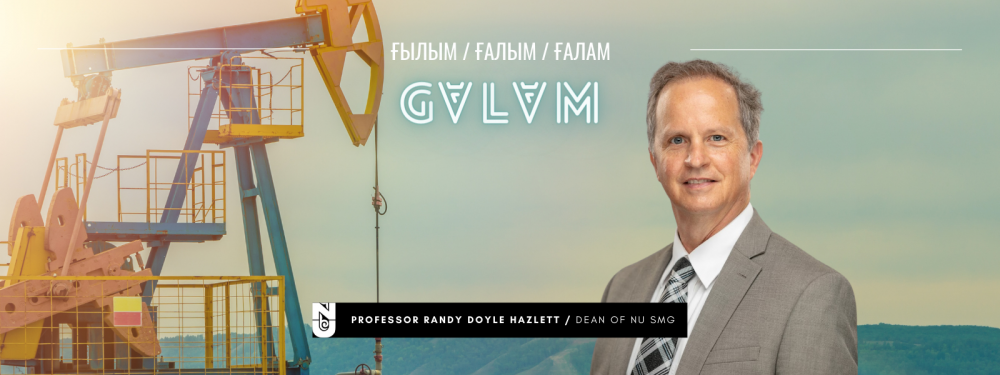Galym-Galam: Professor Randy Doyle Hazlett, Dean of NU SMG
Our new guest of ‘Galym-Galam’ rubric is Professor Randy Doyle Hazlett, Dean of NU School of mining and geosciences. Prof. Hazlett worked for one of the world’s leading oil corporations Mobil R&D, and has rich experience in the academic field. The Professor received Chevron Visiting Scholar and Chevron Fellow Awards. Now the Dean of SMG is working on the development of new mathematical formulas to model well and reservoir production that were previously considered impossible.
Can you please tell us about your educational and professional background?
I am a chemical engineer by education and was retrained as a petroleum engineer by Mobil R&D Corporation. I worked in corporate R&D for 15 years in the area of displacement process physics in porous media and its various applications. At the time of the Exxon-Mobil merger, I left the company to start my own research and consulting firm. After successful projects with the National Science Foundation, I joined the academia at the University of Tulsa. I came to NU 2+ years ago as a Professor in Petroleum Engineering and was asked to assume duties of the Dean after my initial 6 months in Nur-Sultan.
Сan you please tell us about your current research project?
While I still have fundamentals of multiphase flow in porous media interests, I currently work in the area of well performance and forecasting. My research is in the development of new mathematical formulas to model well and reservoir production that were previously deemed impossible. We are using advanced mathematical solutions to address problems such as inflow prediction for wells of arbitrary trajectory and depletion of reservoirs subdivided by fractures at all scales.
What are your key research findings?
We have recently developed new approaches to interpret production data in unconventional reservoirs that help characterize the geometry of fractures. We have also constructed the building blocks for embedded discrete fracture modeling that allow analytic solutions at a fine-scale to be passed to a coarse-scale simulation, saving tremendous computational time without loss of information. We are hoping to apply such technology in production forecasting for prolific naturally fractured Caspian reservoirs, such as Tengiz.
Why did you choose to join NU?
I joined NU for the opportunity to help shape a new program at a relatively new university and continue to pursue my research interests. My experience with Kazakhstani students at the University of Tulsa had been extremely positive. I also thought it a great challenge and adventure to venture to the opposite side of the globe and experience sights and cultures, not possible based in the United States.
What are your future plans?
As Dean, I want to see the School of Mining and Geosciences grow into an educational and research powerhouse for the country and region. We want to shift towards industry-driven and sponsored research. I want to develop a self-sustaining program and continue to invest in talented faculty, staff, and students.


